Top 20 Best Advertising Campaigns of All Time
To successfully sell a new product or service, it is necessary to ensure that potential customers are aware of it. Even if a product or service is the best in the industry, it will only be successful with proper presentation and promotion. This is why advertising campaigns are so important.
There are several ways to create an advertising campaign, but first, it is crucial to identify the target audience and tailor the campaign to their specific needs and interests. One strategy is to analyse marketing ideas and advertising examples to see what has worked for other businesses and identify possible areas for improvement.
It is also essential to determine the appropriate marketing channels to reach the target audience, such as social media, email marketing, search engine optimisation or print advertising. Each channel has strengths and weaknesses, so choosing the most effective channels for promoting the product or service is crucial.
Another critical aspect of a successful advertising campaign is creating a compelling and memorable message that resonates with the target audience. The message should be clear, concise, attention-grabbing and contain a solid call to action that motivates people to act.
Finally, monitoring and analysing the advertising campaign's success is crucial using metrics such as click-through rates, conversion rates and customer feedback. By collecting data and analysing the results, companies can continuously improve and refine their advertising campaigns for maximum impact.
Table of Contents
What are Advertising Campaigns?
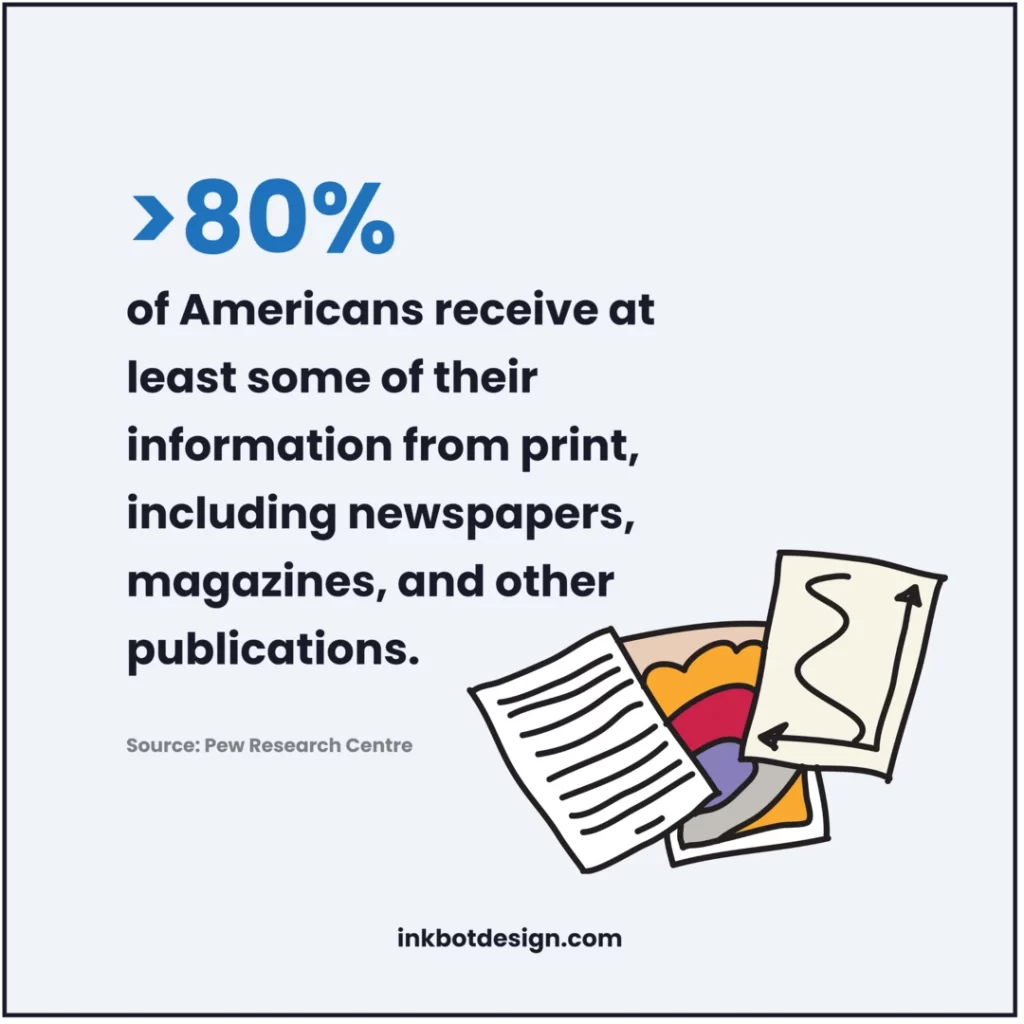
A promotional campaign is a planned and executed series of activities to promote and market a specific product or service. It includes a variety of tactics that work together towards a particular goal, such as increasing brand awareness, driving traffic to a website or increasing sales.
The key to a successful advertising campaign is understanding the target audience and tailoring the marketing message to their needs and interests. To achieve the desired result, different strategies are often used in the different phases of the campaign, e.g. pre-launch, launch and post-launch.
In the pre-launch phase, marketers aim to attract attention and build anticipation for the new product or service. This is often done using social media, influencer marketing and other promotional activities to create hype and generate interest.
In the launch phase, the focus shifts to providing more detailed information about the product or service, including its features and benefits, and highlighting its uniqueness. Traditional advertising methods such as television commercials, print ads and billboards can be particularly effective at this stage.
In the post-launch phase, the goal is to keep the product or service in the consumer's mind and encourage continued engagement. You can achieve this through various tactics, such as email marketing, social media and loyalty programs.
An effective advertising campaign should be strategic, targeted, and focused on achieving specific business objectives. By using a variety of tactics and channels, companies can maximise their reach and increase their chances of success.
Top 20 Advertising Campaigns of All Time
1 – Nike – Just Do It
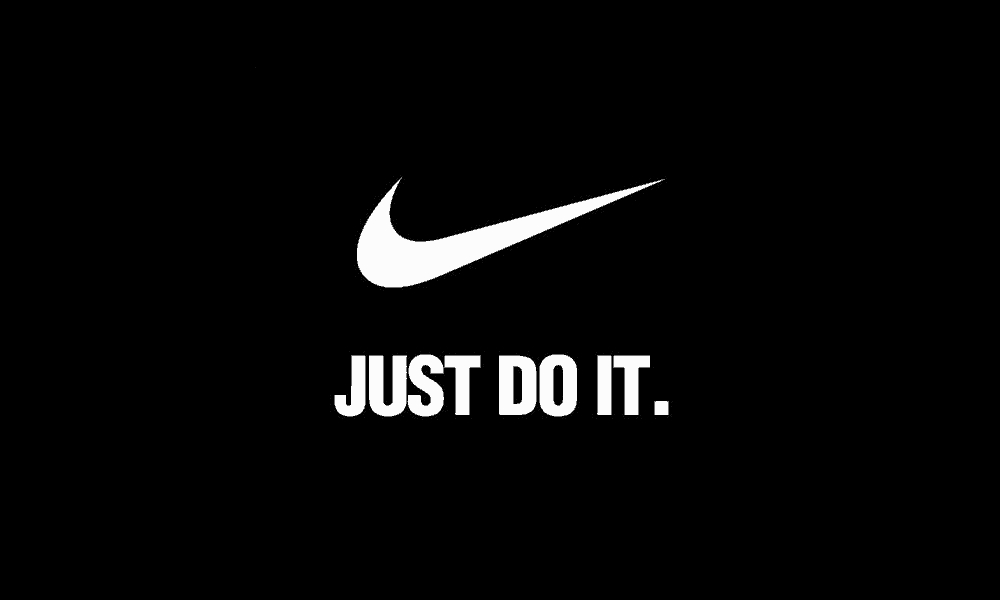
Nike, which initially focused on marathon runners, changed its strategy in the late 1980s to capitalise on the fitness craze and outperform its competitor, Reebok. At the time, Reebok was selling more shoes than Nike, and Nike knew it had to change its approach to remain competitive.
Nike created the iconic “Just Do It” campaign in the late 1980s to achieve this goal. The slogan was a massive success because it got to the heart of people's feelings about sports and motivated them to go beyond their limits. The short and sweet campaign conveyed a strong message that resonated with all audiences.
As a result, Nike's sales grew exponentially, from $800 million in 1988 to over $9.2 billion in 1998. Today, “Just Do It” remains one of the most recognisable slogans in the world, with a message that transcends sport and speaks to people from all walks of life.
The “Just Do It” campaign was successful because it spoke to people's fundamental desire to go beyond their limits and achieve their goals. The slogan appealed to everyone, regardless of their sporting ability or fitness level, and inspired them to get active and achieve more than they thought possible.
In addition, the campaign was an excellent example of effective marketing as it created a solid emotional connection with consumers while keeping the message simple and direct. By focusing on a short, memorable phrase and accompanying it with compelling imagery, Nike created a powerful impact and solidified its brand as a leader in the sports industry.
Overall, Nike's “Just Do It” campaign is a shining example of the power of effective marketing and the importance of understanding and resonating with the target audience. By tapping into the fundamental human desire to push beyond its limits, Nike created a slogan that continues to inspire people today.
2 – Volkswagen: Think Small
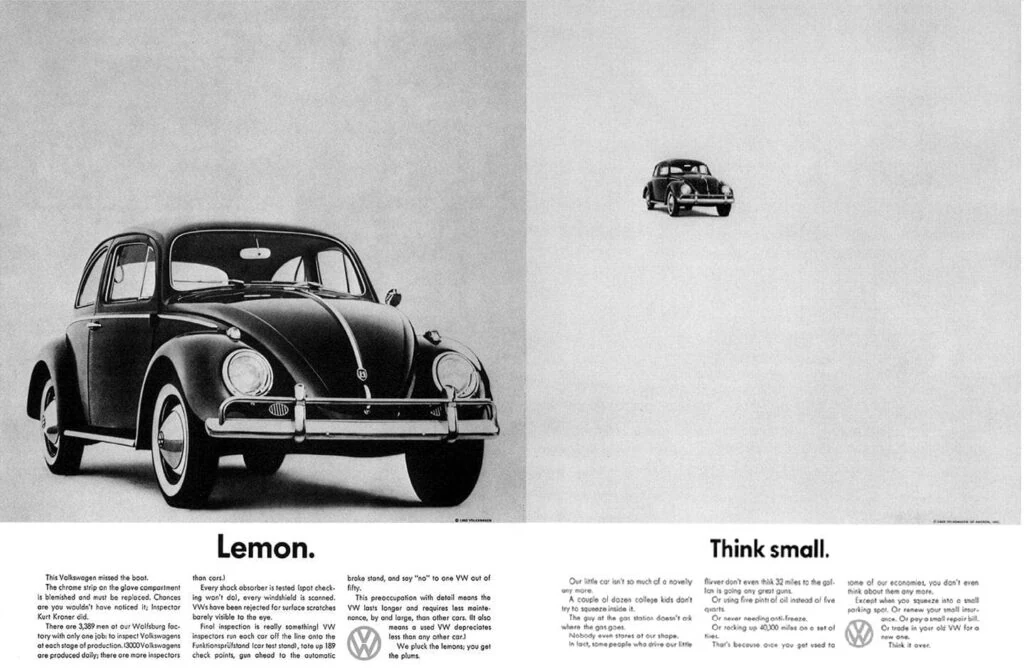
The Volkswagen “Think Small” campaign is often a prime example of effective advertising. In 1960, the advertising group Doyle Dane & Bernbach (DDB) set out to change the American public's perception of small German cars. Although 15 years had passed since World War II, most Americans still preferred big American cars, and Volkswagen was not selling well.
Instead of pretending to be something they were not, the “Think Small” campaign embraced the idea of being small. In this way, the campaign succeeded in changing the perception of the product and creating a positive association with small cars. The campaign message was straightforward and honest, using wit and humour to create a memorable and effective advertisement.
The “Think Small” campaign is often praised for its innovative approach and successful targeting of a specific audience. It showed that advertisers could connect with consumers and change their perceptions by understanding and embracing the values and expectations of the target audience. The campaign's success was such that it is still studied and referred to by marketing and advertising professionals today.
3 – Coca-Cola: Share a Coke

Coca-Cola, a big brand, needed to do something new to appeal to the masses. To achieve this, the “Share a Coke” campaign was launched. In this campaign, which started in Australia in 2011, each bottle was personalised with the 150 most popular names in the country. In the US, Coke followed suit and printed the first names in their font on the front of the bottles and cans. The campaign was so popular that people could order customised bottles with nicknames and college logos on the Coke website.
While this campaign excited many consumers, it left others needing clarification. Some wondered why such a personalised campaign was limited in time. Nevertheless, Coke received immediate attention, and even Pepsi published counter-ads poking fun at the bottle names and asking how people felt about receiving the wrong name.
The Share a Coke campaign was a significant turning point in the marketing and advertising industry. It showed that a big brand like Coca-Cola could offer its customers a personal experience that made them feel seen and heard, and the campaign's success proved that customers are willing to share personal experiences with brands. The campaign's success proved that customers are eager to share personal experiences with brands.
4 – Dos Equis: The Most Interesting Man in the World
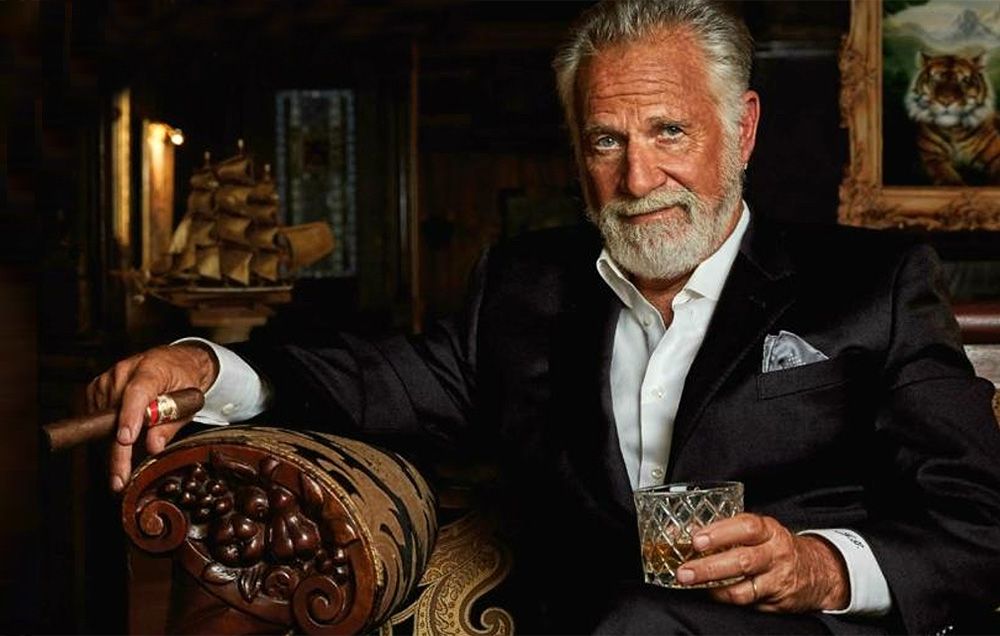
The most interesting man in the world, an iconic advertising figure created for Dos Equis beer, is instantly recognisable by his Cuban cigars, confident personality and memorable slogan: “I don't always drink beer, but when I do, I prefer Dos Equis. Stay thirsty, my friends”. The campaign's success shows that appealing to consumers' desires and creating a unique character they can identify with is an effective advertising tool.
The clever use of commercial exaggeration also contributes to the campaign's success. The character's outlandish exploits and seemingly effortless ability to conquer anything he sets his mind to appear both likeable and desirable. The message that you, too, can be enjoyable and exciting by drinking Dos Equis beer resonates well with viewers, especially those who appreciate adventure and discovery.
Even though the original performer has been replaced, the campaign's popularity has remained strong, partly thanks to the proliferation of memes featuring the most interesting man in the world. The lesson to be learned from this campaign is that a solid and memorable character, combined with a clever message and exaggerations, can produce an advertising campaign that is both effective and enduring.
5 – Apple: Get a Mac

This content highlights one of Apple's most successful campaigns addressing the Mac versus PC debate. The campaign's success led to significant growth in Apple's market share and sympathetically communicated the product benefits without being too obvious.
The Mac vs PC commercials aimed to illustrate the differences between Apple's Mac computers and personal computers in a humorous way. They featured two characters representing Mac and PC, with Mac being the cool and young and PC being nerdy and outdated. These commercials made Mac computers more accessible and attractive to consumers, emphasising their ease of use and reliability.
The campaign's success lies in its ability to relate to consumers by highlighting real-life scenarios and problems many people experience using PCs. Rather than overtly promoting Apple's products, the commercials aimed to educate consumers casually and humorously about the benefits of Mac computers. This approach made the product more accessible and less intimidating to potential buyers and helped Apple grow its market share significantly.
The key takeaway from this campaign is that brands should aim to communicate the benefits of their products to their audience in a personable and humorous way. By highlighting how a product can solve consumers' problems, brands can increase their appeal and stand out in a crowded market.
6 – De Beers: A Diamond Is Forever
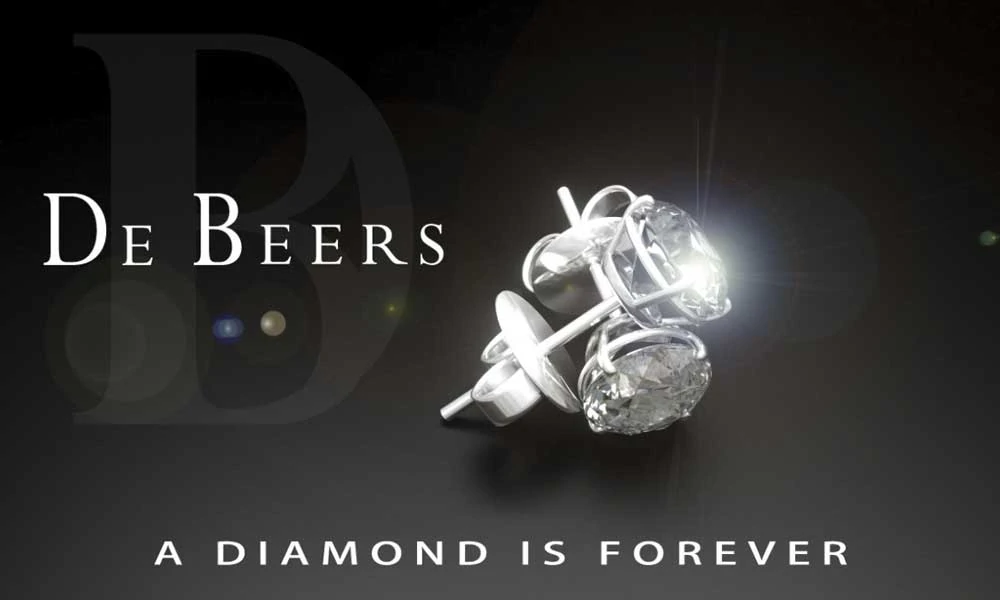
De Beers introduced the slogan “A Diamond Is Forever” in 1947, which is still used today, making it one of the longest-running advertising campaigns. Frances Gerety wrote the motto of the NW Ayer advertising agency in Philadelphia.
Interestingly, the slogan was introduced when diamond sales declined due to the Great Depression. De Beers realised it needed to change the public perception of diamonds and convince people that diamonds were valuable and necessary. The “A Diamond Is Forever” campaign helped change most Americans' relationship with diamonds, and proposing a diamond engagement ring became commonplace.
The slogan became a cultural zeitgeist after the publication of Ian Fleming's fourth James Bond novel, Diamonds Are Forever, in 1956. The book was made into a film in 1971, further entrenching De Beers' slogan in popular culture.
De Beers continues to rely on sleek black-and-white advertising that conveys a sense of timelessness to sell its expensive diamonds. The commercials feature elegant images of couples and the iconic De Beers logo, with the tagline “A Diamond Is Forever” taking centre stage. The campaign is successful because it conveys a sense of value and timelessness that has resonated with consumers for over seven decades.
7 – California Milk Processor Board: Got Milk?

The California Milk Processor Board's “Got Milk?” campaign is an excellent example of how a successful marketing campaign can target an already established audience to make a positive impact. By focusing on people already drinking milk, the campaign increased milk sales in California by 7% in just one year, proving the effectiveness of targeted advertising.
The “Got Milk?” campaign, launched in 1993, featured celebrities with milk moustaches in print and television ads accompanied by the iconic slogan “Got Milk?”. The campaign was so successful that it eventually spread across the country, with different variations for different states.
What was unique about this campaign was that it did not try to appeal to a new audience but instead focused on existing milk consumers. Presenting milk as a cool and desirable product encouraged consumers to continue drinking milk and even encouraged them to drink more. The message was clear: milk is not just a boring drink but a cool, trendy, essential element of daily life.
The success of this campaign also led to an explosion of parodies: millions of people created their versions of the slogan “Got Milk?” by filling in the blanks. The campaign's longevity and cultural influence testify to its effectiveness and resonance with consumers.
The lesson is that sometimes, the best way to increase sales is not to target new audiences but to build loyal advocates among existing customers. By showing them why they should continue to use your product or service, you can create a lasting relationship that will benefit your brand in the long run.
8 – American Express: Don't Leave Home Without It
American Express Co is a multinational financial services company known for its charge cards, credit cards and traveller's cheques. In 1975, the company introduced its iconic slogan “Don't leave home without them” in commercials featuring actor Karl Malden promoting its traveller's cheques. The slogan became synonymous with the brand and essential to the company's marketing strategy.
When American Express began offering credit cards, the company changed its slogan to “Don't leave home without it”, keeping the association with the original phrase but applying it to its new product line. The new slogan quickly became part of American culture and is still recognised and used today.
The company's marketing strategy has always been creating a sense of exclusivity and luxury for its products. Using celebrities to promote the brand has been essential to this strategy. For over two decades, Karl Malden was the face of the brand, but in recent years, American Express has also used other celebrities, such as Stephen King and Jerry Seinfeld, to promote its products.
The lesson to be learned from American Express' success is that a catchy slogan can be a powerful tool to build brand awareness and customer loyalty. Adapting to changing times and constantly evolving a brand's marketing strategy is essential to remain relevant and practical.
9 – Old Spice: The Man Your Man Could Smell Like
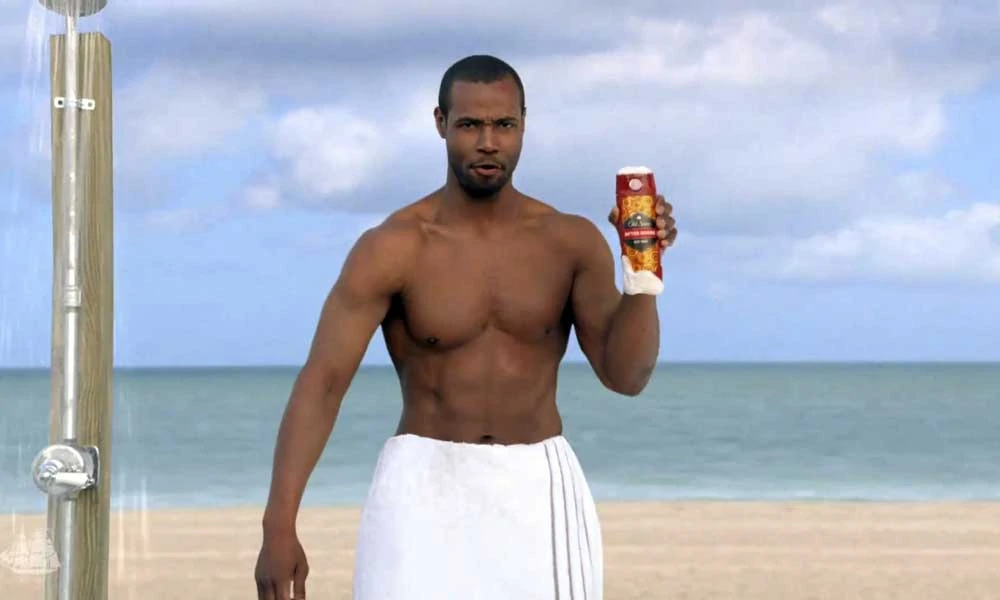
In 2010, Old Spice launched an advertising campaign with a hilarious commercial called “The Man Your Man Could Smell Like”, which quickly became a viral sensation with over 51 million views. The commercial featured actor Isaiah Mustafa, who became the “Old Spice Guy” and the face of the campaign. The success of the first commercial led to a second commercial featuring Mustafa and an interactive video campaign that took the internet by storm.
Old Spice's social media campaign included personalised video responses from Mustafa to comments from fans on various social media platforms, including Facebook and Twitter. In just two days, the company produced 186 funny, personalised videos viewed almost 11 million times. The campaign also helped Old Spice gain over 29,000 new Facebook fans and 58,000 new Twitter followers.
According to Jason Bagley, former creative director at Wieden + Kennedy and author of the campaign, the campaign's success was due to the company's ability to fast-track personalised TV ads to individual consumers. This approach caught on because no one expected a personalised response, which made the campaign a unique and memorable experience.
The lesson to be learned from Old Spice's successful campaign is to create both funny and personable content and use social media to connect with your audience personally and interactively. This way, you can create a memorable, shareable and successful campaign.
10 – Marlboro: The Marlboro Man
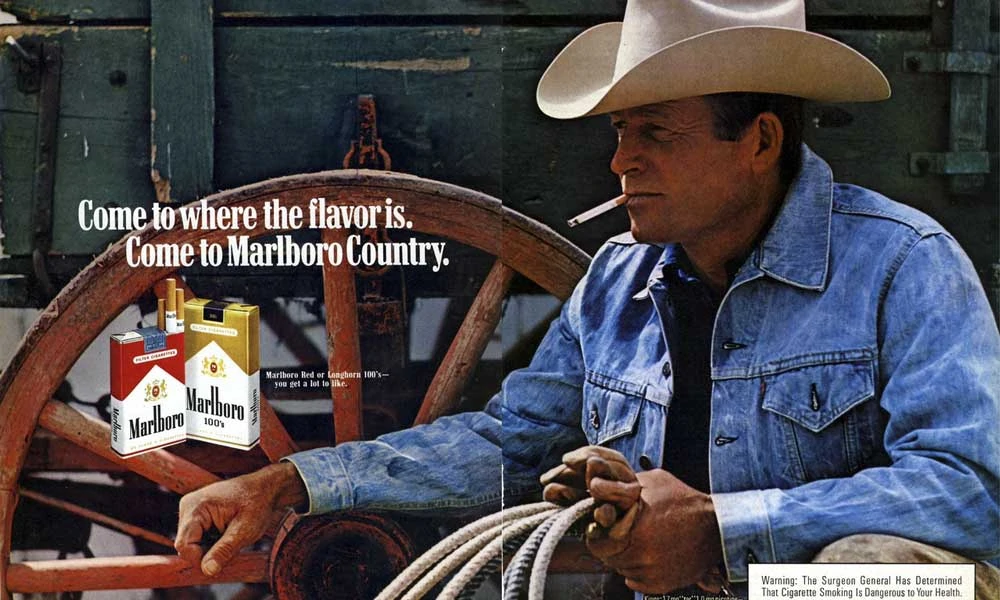
The iconic “Marlboro Man” campaign was a groundbreaking example of modern lifestyle marketing that revolutionised the cigarette industry. In contrast to Marlboro's previous mild marketing efforts, the “Marlboro Man” represented the epitome of the cowboy, exuding gruffness, freedom and masculinity.
The campaign aimed to popularise filtered cigarettes among men by associating with the archetype of the rugged, independent cowboy to convey a sense of rebellion and freedom that resonated with male consumers. The “Marlboro Man” became an instant success and helped Marlboro become the world's best-selling cigarette brand by 1972.
This marketing phenomenon dispelled the notion that only women were receptive to advertising and proved that men were equally receptive to appearances. The “Marlboro Man” campaign demonstrated the power of brand imagery and storytelling to create a solid emotional connection with consumers, which ultimately boosted sales and solidified Marlboro's position as the leading cigarette brand.
11 – Dove: Real Beauty

Dove's “Real Beauty” campaign was a groundbreaking marketing campaign that addressed the unrealistic beauty standards that the beauty industry has been promoting for years. The campaign launched by Unilever in 2004 aimed to boost women's and children's self-confidence and promote a more authentic and inclusive definition of beauty. The campaign used various media, such as posters and television commercials, to raise awareness and start a conversation about beauty standards.
The success of the campaign can be attributed to several factors. First, the drive resonated with the target group because it addressed a real issue relevant to their lives. The campaign highlighted the impact of unrealistic beauty standards on young women's self-esteem and body image and created a platform for them to make their voices heard. By featuring real women of different ages, sizes, and races, the campaign showed that beauty comes in all shapes and sizes and that everyone deserves to feel beautiful.
Secondly, the campaign was authentic. Using real women in the campaign helped create a sense of authenticity and relatability. Dove's commitment to the campaign's message was also reflected in its products. Dove was among the first brands to feature real women in its commercials. It continued to use real women in its products, such as body care, which supported the campaign's message of inclusivity and authenticity.
Third, the impact of the campaign was far-reaching. The campaign was well received and generated extensive media coverage, which helped to spread the message. It also sparked a discussion about beauty norms and their impact on women's self-esteem and body image. The campaign's success inspired other brands to follow its lead and advocate for more inclusive and authentic beauty standards.
The Dove Campaign for Real Beauty is a testament to the power of marketing to drive social change. It has shown that marketing can impact society and bring about meaningful change. The campaign's message is still relevant today as beauty standards continue to evolve and consumers demand more authentic and inclusive representation in advertising.
12 – Snickers: You're Not You When You're Hungry
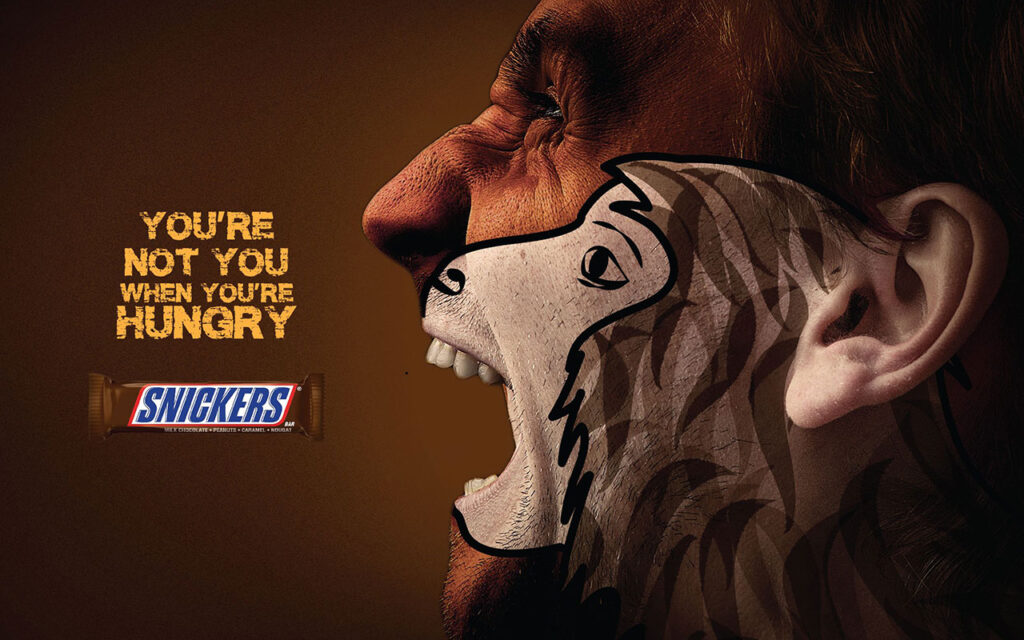
The Snickers campaign “You're Not You When You're Hungry” is a classic example of how celebrity appearances can contribute to a memorable and effective marketing campaign. The campaign, which has been running for over ten years, features a series of commercials in which celebrities such as Betty White and Steve Buscemi appear as ordinary people who become irritable and irrational because of their hunger.
The success of the campaign can be attributed to several factors. First, the use of humour addresses an understandable issue. The ads are amusing and light-hearted, which helps create a positive association with the brand. By showing celebrities behaving in unexpected ways, the campaign captures the relatable experience of ‘hunger' and positions Snickers as the perfect solution to this problem.
Secondly, using celebrities in the campaign helped create an emotional connection with the audience. The stars featured in the ad are well-known and respected, which helps build trust and credibility in the brand. By showing these celebrities in relatable situations, the campaign humanises them and makes them more accessible to the audience.
Thirdly, the consistency and longevity of the campaign are a testament to its success. The You're Not You When You're Hungry campaign has been running for over a decade and has become a cultural phenomenon. The movement has spawned numerous memes and posts on social media that have helped the brand stick in consumers' minds.
13 – Pepsi: Is Pepsi OK?

In 1988, Pepsi launched a groundbreaking marketing campaign with the slogan “Is Pepsi OK? The campaign aimed to challenge the notion that Coca-Cola was the only acceptable cola and to position Pepsi as a compelling and affordable alternative. The humorous and provocative ads asked ordinary people if Pepsi was OK, and their answers ranged from funny to whimsical and were memorable and captivating.
The success of the “Is Pepsi OK?” campaign can be attributed to the clever marketing strategy. By challenging the status quo and encouraging people to question their preferences, the campaign made Pepsi relevant and appealing to a broader audience. The campaign also connected with the audience, as the commercials featured ordinary people, not celebrities.
The “Is Pepsi OK?” campaign was a turning point for Pepsi and the entire advertising industry. It demonstrated the power of humour, likeability and challenging conventional wisdom in marketing. The lasting impact of the campaign can be seen in the fact that the slogan is still associated with the brand today and has been used in various campaigns over the years.
14 – Absolut Vodka: The Bottle
Absolut Vodka is a brand known for its creativity and innovation in advertising. One of its most famous campaigns was “The Bottle”, which was introduced in the 1980s. It changed the perception of vodka and made Absolut Vodka one of the world's most popular and well-known brands.
“The Bottle” campaign included a series of print ads that depicted people using Absolut Vodka bottles in unique and creative ways. The ads were eye-catching and visually appealing, conveying that Absolut Vodka is no ordinary brand but a different and distinctive one.
The success of the campaign can be attributed to the unique advertising approach. Instead of relying on traditional advertising methods, the campaign created visually appealing and memorable ads to capture viewers' attention. The creative use of the Absolut vodka bottle as a visual element of the campaign was a stroke of genius, as it not only differentiated the brand from its competitors but also provided instant recognition.
15 – Budweiser: Wassup?
Budweiser, one of the largest beer producers in the world, has a long history of successful advertising campaigns, but none has been as iconic as the “Wassup?” ad campaign. Launched in 2000, the campaign quickly became a cultural phenomenon and inspired a new generation of beer drinkers.
The campaign's simple concept and humour were what made it stand out. It showed a group of friends casually drinking Budweiser and greeting each other with the now-famous phrase “Wassup?”. The commercials went down well with the audience because they showed everyday situations and likeable characters that people could identify with.
This made the campaign a cultural touchstone, inspiring parodies and spin-offs across the media landscape. The campaign's success earned Budweiser numerous awards, including a Grand Prix at the Cannes Lions International Festival of Creativity, the advertising industry's most prestigious award.
Although the “Wassup?” campaign only ran for two years, it remains one of the most memorable and influential advertising campaigns. It cemented Budweiser's place in the cultural zeitgeist and continues to inspire advertisers today.
16 – Red Bull: Stratos
In 2012, Red Bull launched a revolutionary marketing campaign around the Stratos project. The campaign featured Austrian skydiver Felix Baumgartner jumping out of a helium balloon 24 miles above the earth's surface, breaking the sound barrier. The Stratos project took two years and cost Red Bull an estimated $30 million.
The marketing campaign was a huge success, and the event was watched by over 8 million people online, making it one of the most-watched live events in history. Red Bull created an experience that captivated viewers and underlined the brand's message of pushing boundaries, taking risks and living life to the fullest.
The success of the Stratos project can be attributed to its ability to appeal to a wide range of people, including adventure enthusiasts, science fans and social media followers. The campaign generated conversation and became a trending topic on numerous platforms, from Twitter to Facebook, Instagram and YouTube.
The Stratos project established Red Bull as a leader in the energy drink market by demonstrating the brand's commitment to innovation and pushing boundaries. The company's focus on extreme sports and high-energy events, combined with strategic marketing efforts, has helped Red Bull increase its global brand awareness and dominate the market.
17 – Progressive Insurance: Flo

Progressive Insurance's “Flo” campaign is a long-standing and successful marketing campaign. The character Flo, played by actress Stephanie Courtney, has become an icon in advertising. She is known for her retro look, upbeat personality and witty humour.
A critical element that has made the campaign successful is its consistency. The campaign has been running since 2008 and has maintained a consistent message. The commercials have always focused on the benefits of Progressive Insurance, but having Flo as the spokesperson has made the message even more personal and credible.
The “Flo” campaign has also created a sense of community among viewers. Flo has become a cultural icon, and fans of the campaign often refer to themselves as “Flo-ites”. The character's popularity has extended to social media, where fans share memes and create Flo-inspired content.
The marketing strategy behind the “Flo” campaign is to appeal to customers on an emotional level, using humour and sympathy to create a connection. This strategy has paid off for Progressive Insurance, as the company has seen a significant increase in brand awareness and customer loyalty. The “Flo” campaign has become one of the most successful and well-known advertising campaigns in recent years, showing no signs of abating.
18 – BMW: The Hire
In 2001, BMW took a unique approach to marketing its vehicles by launching “The Hire”, a series of eight short films in which BMW vehicles were an essential part of the storyline. The films were created with high production values and starred famous actors such as Clive Owen, Gary Oldman and Madonna.
Each film followed the adventures of “The Driver”, a character played by Owen who completes various missions behind the wheel of a BMW vehicle. The films were directed by well-known filmmakers such as Guy Ritchie and Ang Lee, which helped the campaign attract much attention and interest.
The Hire campaign won several awards, including the Cyber Grand Prix at the Cannes Lions International Festival of Creativity. The campaign helped boost BMW sales and reposition the brand as a stylish, sophisticated, high-performance vehicle provider.
One of the reasons “The Hire” was so successful was its ability to appeal to a broader audience than just car enthusiasts. The films were more than just commercials for BMW vehicles; they were compelling and exciting short stories that showcased the vehicles dynamically and engagingly. By focusing on creating compelling content rather than just selling products, BMW was able to create a marketing campaign that was memorable and effective.
19 – Wendy's: Where's the Beef?
Launched in the 1980s by Wendy's, the “Where's the Beef?” campaign remains one of the most memorable and successful advertising campaigns. Created by Dancer Fitzgerald Sample, the campaign aimed to differentiate Wendy's hamburgers from other fast-food chains by highlighting the use of fresh, high-quality beef in the burgers.
The campaign star was actress Clara Peller, who appeared in the ad and questioned the size of other fast food chains' burgers, asking the famous question: “Where's the beef?” This slogan quickly became a pop culture sensation and helped Wendy's gain a competitive edge in the fast food industry.
The campaign's success can be attributed to its ability to appeal to customers comprehensively. The simple, catchy phrase and humorous execution made the ads memorable and effective. The “Where's the Beef?” campaign is often cited as an example of effective advertising and has become a cultural icon.
Today, Wendy's still uses the slogan in its marketing efforts, albeit with a modern twist, to appeal to a new generation of customers. The legacy of the “Where's the Beef?” campaign remains strong: the phrase is quoted in films, TV shows and even political speeches, cementing its place in pop culture.
20 – Gillette: The Best Men Can Be
Many memorable marketing campaigns have emerged in recent years. Still, one, in particular, stands out for its powerful message addressing challenging issues and the harsh realities of our world.
Gillette's campaign takes a unique approach by highlighting men's strengths and weaknesses and encouraging them to stand up for what is right. Against the backdrop of the #MeToo movement and other systemic issues that have come to light, the commercial shows that Gillette recognises the impact of men and their role in shaping a better future.
What makes this commercial special is Gillette's willingness to admit past mistakes and take responsibility for being part of the problem. In a bold move, the ad begins with the old slogan “The Best A Man Can Get” and then turns the question back on itself by asking if they have lived up to that standard.
By admitting its past mistakes, Gillette takes the first step towards change and improvement. Gillette's commitment to bringing out the best in men is evident in this digital marketing campaign that resonated with viewers worldwide.
The ad calls on men to take responsibility for their actions and stand up against toxic masculinity, sexism and other harmful behaviours that are all too common. Gillette's message of commitment and personal growth has resonated with audiences, making the ad one of the most talked about marketing campaigns in recent years.
Types of Advertising Campaigns
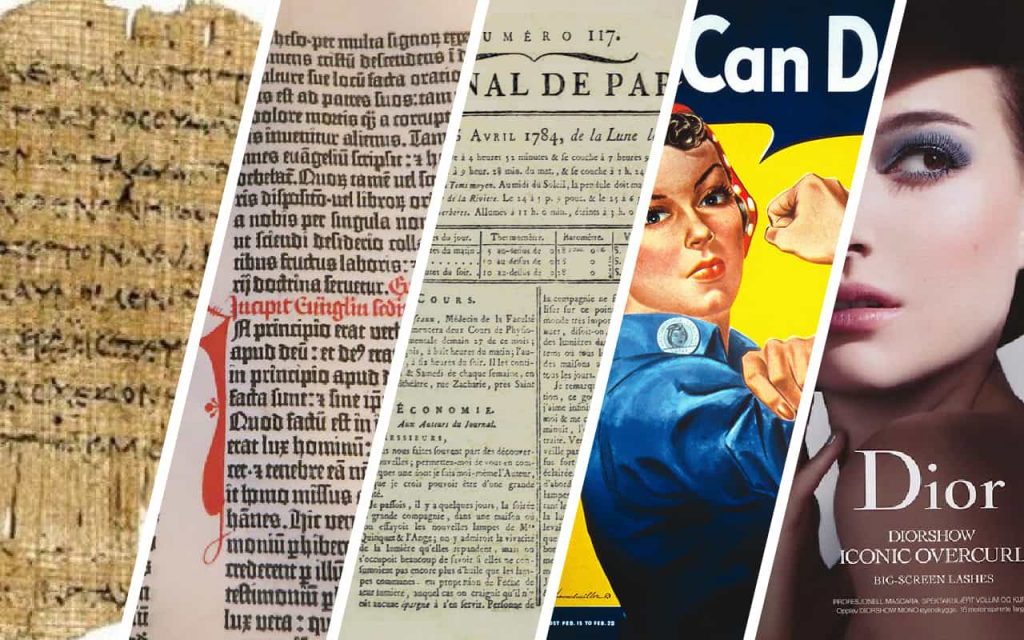
Advertising is a fundamental aspect of modern business used to promote products, services, or ideas to a target audience. There are four primary types of advertising: informative, persuasive, reminder, and reinforcement advertising. Understanding these types of advertising can help businesses develop effective campaigns that resonate with their target audience and achieve their desired outcomes.
1 – Informative Advertising
Informative advertising is designed to provide information about a product or service to the target audience. Informative advertising aims to educate the audience and raise awareness about the product or service's features, benefits and uses. Informative advertising is commonly used for new products, services, or those that require explanation or instruction.
For example, a company that has developed a new software program might use informative advertising to explain how it works and its benefits to potential users. Informative advertising is typically used in the early stages of the product or service's life cycle.
2 – Persuasive Advertising
Persuasive advertising aims to persuade the target audience to take a particular action, such as buying a product or service. This type of advertising is designed to create a sense of urgency or desire in the target audience and persuade them to take action. Persuasive advertising is commonly used for products or services that have established a market presence and seek to increase market share.
For example, a company that sells a famous soda brand might use persuasive advertising to promote its new flavour and encourage consumers to try it. Persuasive advertising typically focuses on emotional appeals to the audience, using images and slogans that create a sense of excitement, desire, or fear of missing out (FOMO).
3 – Reminder Advertising
Reminder advertising is used to remind the target audience of the existence and benefits of a product or service. This type of advertising is commonly used for products or services that have already established a market presence and are well known to the target audience.
For example, a company that sells a popular brand of toothpaste might use reminder advertising to remind consumers of the importance of dental hygiene and the benefits of using their toothpaste. Reminder advertising is often used with persuasive advertising to maintain the product or service's market position.
4 – Reinforcement Advertising
Reinforcement advertising reinforces the target audience's previous purchase or experience with a product or service. This type of advertising is commonly used for products or services with a loyal customer base and seeking to maintain customer loyalty and repeat business.
For example, a company that sells a famous brand of coffee might use reinforcement advertising to remind customers of their previous positive experiences with the coffee and reinforce their loyalty to the brand. Reinforcement advertising is typically used in the life cycle of the product or service after the target audience has already made a purchase.
In conclusion, understanding the different types of advertising can help businesses develop effective advertising campaigns that resonate with their target audience and achieve their desired outcomes. Companies can educate, persuade, remind, or reinforce their target audience by choosing the proper advertising, driving sales and building brand loyalty.
Conclusion
In summary, advertising is essential to our daily lives and significantly impacts how we perceive products, brands and even ourselves. The advertising campaigns mentioned in this list have managed to grab our attention and leave a lasting impression on us.
From “Got Milk?” to “Just Do It”, these campaigns have demonstrated the power of creativity and storytelling in advertising. They have succeeded in capturing the essence of the product, appealing to the target audience and, most importantly, creating an emotional connection.
The best advertising campaigns can adapt to changing times, technologies and social norms while staying true to their brand values. These campaigns have continued to inspire new generations of marketers and advertisers and set the bar high for future campaigns.
Ultimately, the most successful advertising campaigns positively impact people's lives by making them laugh, inspiring them to take action or simply making them feel good. This is a testament to the power of advertising and its ability to shape culture, influence our choices and change our world.
